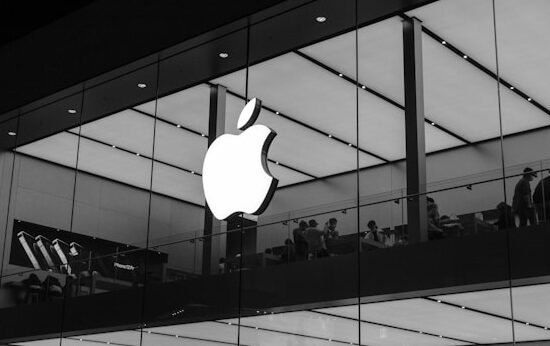Apple pledges $500bn in US investments, raising questions—is this innovation or a bid to dodge Trump’s tariffs?
Apple has unveiled a staggering $500bn investment plan for the United States, promising new manufacturing facilities, artificial intelligence expansion, and around 20,000 new jobs. But behind the announcement lies a brewing trade battle—one that could force Apple to shift its production strategy as Trump tightens his grip on US-China trade relations.
The announcement follows reports that Apple CEO Tim Cook met with Donald Trump last week, just as the White House imposed a 10% tariff on Chinese imports. Many of Apple’s flagship products, including the iPhone, are assembled in China, meaning the tech giant faces mounting pressure to localise production or risk higher costs. While Apple managed to secure tariff waivers during Trump’s first term, the landscape now appears far less forgiving.
Apple insists the investment is part of a broader strategy to strengthen its US presence. However, the timing suggests a strategic recalibration. Trump’s tariffs pose a direct threat to Apple’s bottom line, potentially raising iPhone prices in its biggest market.
In response, Apple is pushing ahead with plans to ramp up domestic production. The company has already begun mass-producing its own chips in Arizona, in collaboration with Taiwan Semiconductor Manufacturing Co (TSMC). The factory, employing over 2,000 workers, is a crucial step in Apple’s move towards self-reliance.
TSMC, which produces around 90% of the world’s most advanced semiconductors, is now at the heart of a political tug-of-war. Trump, reportedly preparing to overhaul the Chips Act, has questioned whether companies like TSMC should receive government subsidies. Instead, he suggests they need “incentives” in the form of reduced taxes rather than financial handouts.
Beyond chip manufacturing, Apple is making a bold push into artificial intelligence. A major part of its investment will go towards a 250,000 sq ft facility in Houston, built in partnership with Foxconn. This plant will assemble AI servers for Apple Intelligence, the company’s latest suite of AI-driven features. Until now, these servers were manufactured overseas—another clear sign that Apple is preparing for a more US-centric future.
Apple is also expanding its existing data centres in North Carolina, Iowa, Oregon, Arizona, and Nevada. These upgrades will support Apple’s growing reliance on AI-driven services, reinforcing its commitment to innovation while strategically aligning with US manufacturing goals.
Embed from Getty ImagesDespite Apple’s public commitment to American manufacturing, its dependency on China remains a key vulnerability. While some components—such as chips from Broadcom and Skyworks Solutions—are sourced domestically, the majority of Apple’s devices are still assembled in China. A prolonged trade war could force Apple to accelerate its production shift, potentially disrupting its supply chain.
Adding to the geopolitical complexity, reports suggest TSMC is in discussions to acquire Intel’s chip-making plants—an acquisition reportedly encouraged by the Trump administration. Intel, once a semiconductor powerhouse, has struggled to compete with TSMC. If the deal goes through, it could reshape the global semiconductor landscape, giving the US a stronger foothold in advanced chip production.
Beyond immediate expansion, Apple is investing in future talent. The company plans to open a manufacturing academy in Michigan, where its engineers will collaborate with local universities to offer free training courses. These programmes will focus on manufacturing process optimisation and project management, ensuring smaller firms can keep pace with Apple’s industry-leading practices.
Apple frames its $500bn investment as a step towards innovation and economic growth. But with Trump’s trade policies looming large, many see it as a defensive manoeuvre—an attempt to future-proof the company against potential economic turbulence.
Tim Cook has expertly navigated political minefields before, securing key tariff exemptions and balancing relations with both US and Chinese officials. But as global trade tensions escalate, Apple’s next steps could determine whether it remains a dominant force in tech or becomes another casualty of geopolitical crossfire.
One thing is clear: Apple isn’t just playing with numbers—it’s playing for survival.
